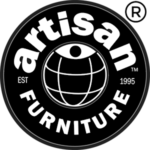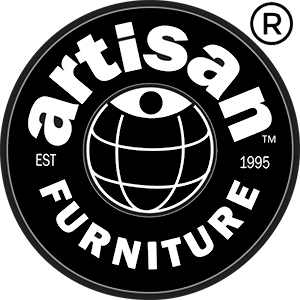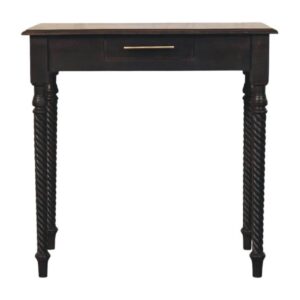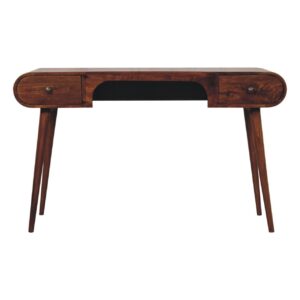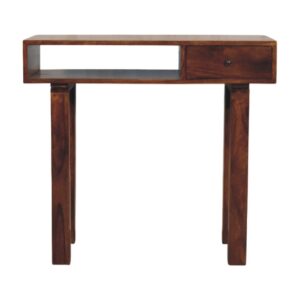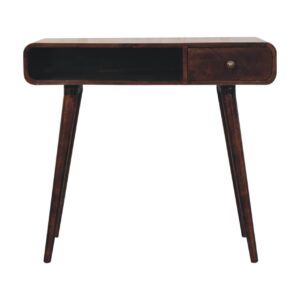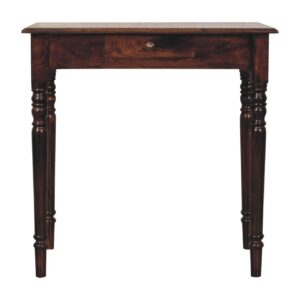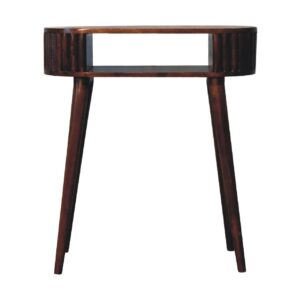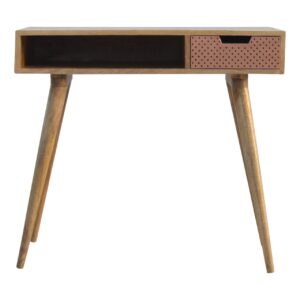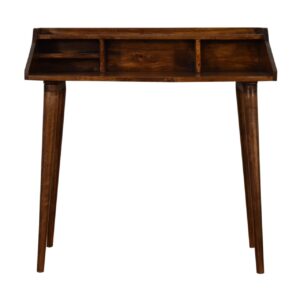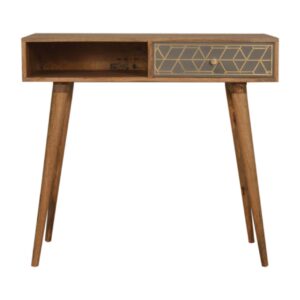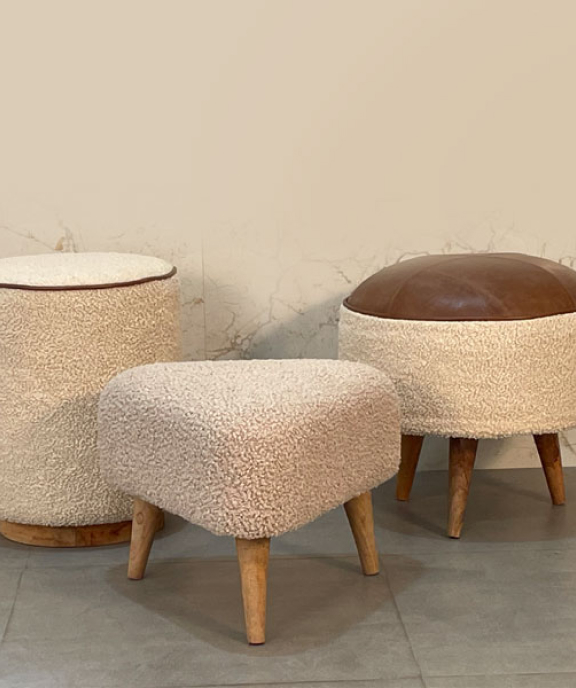A writing desk is known by several terms, reflecting its design and functionality. Common names include bureau, characterized by drawers for storage; secretary desk, which features a hinged top to reveal a writing surface; and roll-top desk, designed with a sliding cover that conceals the workspace. Other styles like folding desks and modern minimalist desks cater to varied preferences and spatial needs. Understanding these terms is essential when selecting the right desk for your workspace. By exploring these options, you'll gain insights into which design best suits your requirements and enhances your productivity.
Common Names for Writing Desks
When it comes to writing desks, you'll find several common names that reflect their design and purpose. The term "bureau" often describes a style with drawers, emphasizing storage along with workspace. "Folding desk" refers to those that can be collapsed for easy storage, ideal for smaller spaces. A "secretary desk" features a hinged top that reveals a writing surface, combining elegance with functionality. Another common name is "roll-top desk," characterized by a sliding cover that conceals the workspace, allowing for a tidy appearance. Each name highlights specific features, so understanding these terms can help you choose the right desk for your needs. Ultimately, selecting the appropriate writing desk enhances both your comfort and productivity while working.
Types of Writing Desks
When choosing a writing desk, you'll encounter various styles, each serving different needs. Traditional writing desks often feature ornate designs and ample storage, while modern writing desks focus on minimalism and functionality. Understanding these types can help you select the best option for your workspace.
Traditional Writing Desks
Traditional writing desks come in various styles, each designed to enhance your writing experience. Common types include the roll-top desk, which features a retractable cover to protect your workspace and documents, and the partner's desk, offering ample surface area for collaborative work. The writing slope, with its angled top, promotes comfort during long writing sessions, while the secretary desk combines storage with a compact design. These desks often showcase craftsmanship, utilizing materials like solid wood and intricate detailing. They provide not only functionality but also a sense of history and aesthetic appeal. When selecting a traditional writing desk, consider your specific needs, including space, storage options, and the overall style that complements your environment.
Modern Writing Desks
As you explore modern writing desks, you'll find a range of designs that cater to contemporary needs and aesthetics. These desks often feature sleek lines, minimalist constructions, and materials like metal and glass, appealing to a modern sensibility. Standing desks are gaining popularity, promoting better posture and health, while compact designs maximize space for smaller homes or offices. Some modern writing desks include built-in storage solutions, like drawers or shelves, to keep your workspace organized. Additionally, multi-functional desks that double as creative spaces can adapt to various tasks, enhancing their utility. Whether you prefer a chic, industrial look or a more traditional finish, modern writing desks offer versatility and style, ensuring you can find one that fits your needs perfectly.
Historical Significance of Writing Desks
Writing desks have evolved considerably over the centuries, reflecting changes in both functionality and style. As you explore their designs, you'll notice how cultural influences shaped their construction, from ornate pieces in royal courts to minimalist styles in modern homes. Understanding this evolution not only highlights the desk's practical role but also its importance in the context of historical and societal shifts.
Evolution of Writing Desks
Since their inception, writing desks have played a pivotal role in the evolution of personal and professional communication. Initially crafted for the elite, these desks facilitated the art of letter writing and document creation, becoming essential in homes and offices. As the Industrial Revolution introduced mass production, writing desks became more accessible, reflecting a shift in societal values towards literacy and education. By the 20th century, designs evolved to incorporate technology, adapting to typewriters and later computers, showcasing their versatility. Today, writing desks continue to symbolize organization and productivity, merging traditional craftsmanship with modern aesthetics. This evolution highlights how these pieces of furniture have not only supported communication but also mirrored broader societal changes and technological advancements.
Cultural Influence on Design
While the design of writing desks has evolved over centuries, they've consistently reflected the cultural values and historical contexts of their time. For instance, during the Renaissance, ornate carvings and intricate designs symbolized wealth and status, while the Industrial Revolution emphasized functionality and mass production. These shifts showcase how writing desks served not just as furniture but as a reflection of societal priorities. In modern times, minimalist designs highlight a move toward simplicity and efficiency, mirroring contemporary lifestyles. You'll notice that the materials used also tell a story; wood represents tradition, while metal and glass indicate innovation. Ultimately, the writing desk's design is a lens through which you can explore the evolution of human thought and societal advancements.
Features of Different Styles
When you explore the various styles of writing desks, you'll find that each design boasts unique features tailored to different needs and aesthetics. For example, a traditional roll-top desk often includes compartments for organization, making it ideal for those who value tidiness. In contrast, a modern minimalist desk typically features sleek lines and a simple structure, catering to a more contemporary taste. On the other hand, a secretary desk combines form and function, offering both a writing surface and hidden storage. Additionally, an L-shaped desk maximizes workspace, perfect for multitaskers. Each style serves distinct purposes, reflecting individual preferences and work habits, so understanding these features helps you appreciate the diversity in writing desk designs.
Choosing the Right Writing Desk
How do you choose the right writing desk for your needs? First, consider your available space; measure the area where you plan to place the desk. A compact desk may suit smaller rooms, while larger spaces can accommodate more expansive options. Next, evaluate your storage requirements. Desks with built-in drawers or shelves can help keep your workspace organized. Think about your style preferences as well; whether you prefer modern, traditional, or minimalist designs, the desk should complement your existing decor. Additionally, assess the height and surface area to guarantee comfort during use, especially if you spend long hours writing. Finally, factor in your budget; a variety of desks are available at different price points, allowing for flexibility in your choice.
Care and Maintenance Tips
To keep your writing desk in top shape, regular care and maintenance are essential. First, clean the surface regularly with a soft, lint-free cloth to remove dust and prevent scratches. Use a mild soap solution for deeper cleaning, ensuring you don't soak the wood. Apply furniture polish periodically to maintain the finish, but avoid excessive use, which can lead to buildup. Additionally, check for loose screws and tighten them to maintain stability. If your desk has drawers, keep them organized to prevent wear and tear. Finally, place coasters under drinks to avoid rings and stains, and try to keep your workspace clutter-free, as this not only protects your desk but enhances your productivity.
